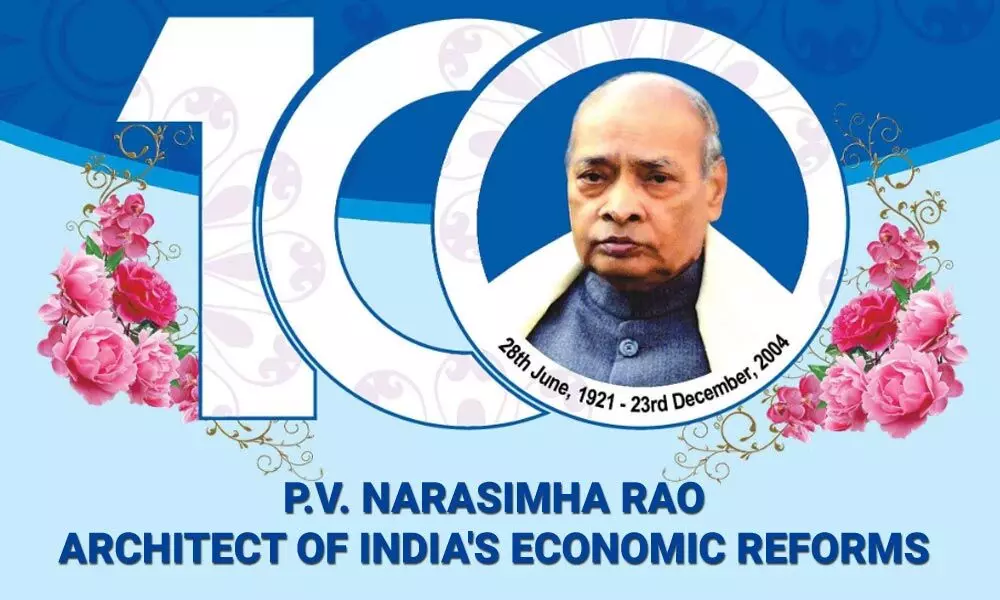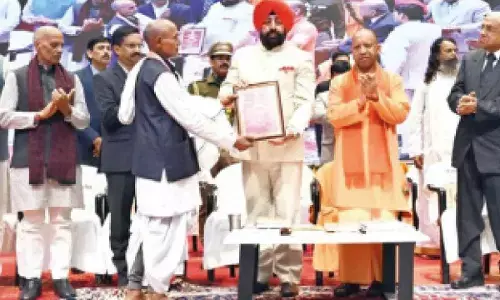PV Narasimha Rao, architect of India's economic reforms

Inheriting an economy which was in ICU, PV initiated bold economic reforms that put India into a higher growth orbit
Pamulaparthi Venkata Narasimha Rao needs no introduction. Hailing from a small village, Vangara, in old Karimnagar district in Telangana, PV Narasimha Rao, as he is popularly known, went on to become the ninth Prime Minister of India. He is the second Prime Minister from non-Hindi belt and the first one from the southern part of the country. But his greatness lies elsewhere.
When he took the reins of India on June 21, 1991, just a week before he turned 71, the country's economy was on the brink of collapse, literally. His predecessor Chandra Shekhar pledged 67 tonnes of gold as collateral to avail an emergency loan of $2.2 billion from the International Monetary Fund (IMF) because the country was on the verge of defaulting on payments even for essential imports. India had barely enough forex reserves to last for three weeks in June that year. Fiscal deficit was at a historic high of 12.7 per cent and internal debt of the government reached a staggering 53 per cent of GDP.
Inheriting an economy, which was in ICU, PV initiated bold economic reforms, dismantled License Raj, cut taxes, de-regulated markets, opened the economy to global investors and encouraged private investments. He roped in Manmohan Singh as Union Finance Minister. Together, the duo laid a solid foundation for unleashing the country's economic potential. The fact that PV's successors continued his economic reforms more aggressively goes on to prove his foresightedness in deciding what is good for the country. In the last three decades, India's forex reserves zoomed from a low of $1.2 billion in January 1991 to over $500 billion now. The country emerged as a global player in the software and pharmaceutical sectors. All these happened because PV did the right thing at the right time at the right speed and with right intentions.
However, experts have a small disagreement with PV's economic reforms. He kicked off his economic reforms by devaluing Indian rupee by nine per cent against the US dollar on July 1, 1991, and again by 11 per cent two days later. He should not have devalued the currency the way he did. Opening up of the economy and dismantling the Licence Raj would have been sufficient to put the Indian economy back on a strong growth track. Currency is Brahmastra in the economic armoury of any nation. That should be used rarely. To know the power of the currency, we have a great example in the US. Despite being haunted by ballooning budgetary deficit and a mammoth debt pile, the US still rules that world. Why is it so? The answer is simple. The US dollar is the world currency. If the dollar weakens, the world will go into topsy-turvy. That is so because forex reserves of most of countries are in US dollars. That includes China, our belligerent neighbour.
Further, China did not meddle with its currency in order to tide over short-term economic crises. Instead, it focused on economies of scale and productivity. India should also have done that. But such mistakes are common when a monumental decision on the opening up of India's economy is made. At least, the country's leadership should wake up now, protect the Indian currency and strengthen it. Further, India should do away with its mechanism of reducing the value of rupee whenever it faces an economic crisis. That's the only way India can catch up with Chinese juggernaut and emerge stronger on the economic front. That way, it can become a global leader both in economic and political spheres, which will be a true tribute to PV, his ideals and his path-breaking ideas. And also for his patience and silence!
I happened to visit his resting place, PV Gyan Bhoomi, on Necklace Road on December 23, 2019. It marked his 15th death anniversary, but sadly the place wore a deserted look. PV spent his whole life with the Indian National Congress and served undivided Andhra Pradesh as its MLA, minister and chief minister on behalf of the Grand Old Party of India. He was a loyal soldier of Congress and Nehru-Gandhi family when he was in New Delhi. He remained so till his last breath. It was the party's and its leadership's call whenever he donned the hats of various union ministries and also when he donned the illustrious hat as India's ninth Prime Minister between 1991 and 1996.
But it was a surprise for me when I found NV Subhash, PV's grandson and an active BJP leader, spearheading the visionary leader's death anniversary activities. He is the one who defends PV whenever senior Congress leaders target the former PM. Of course, BJP's link to preserving PV's legacy doesn't end there though. It was Prime Minister Narendra Modi, who built PV's memorial in New Delhi, while the Congress leadership did not even allow PV's mortal remains into the party's headquarters when he died in 2004. PV deserves better treatment from the Congress party and its national leadership. It's time that Congress mends its ways when it comes to treating PV's legacy.
Telangana Chief Minister Kalvakuntla Chandrasekhar Rao and his government deserve appreciation for taking up birth centenary celebrations of PV on a befitting scale. The celebrations, which begin on his birthday anniversary today (June 28), will last for a year. However, the Telangana government should take all possible measures to preserve his legacy.
For 20 years, he represented Manthani Assembly Constituency in old Karimnagar district in Telangana. Sadly, the constituency is now split between Peddapalli and Bhupalpally districts. Incidentally, the Kaleshwaram Lift Irrigation Project (KLIP) starts from this constituency with Medigadda and Annaram barrages located there. That way, Godavari water begins its reverse journey from this constituency. It will do a great service to PV's legacy if this Assembly constituency is preserved and brought under a single district, so that it will not be split when the re-organisation of Assembly constituencies takes place in future.
Further, there are several such legacies of the architect of India's economic reforms, which need to be preserved. For, the life of PV and his achievements will inspire many generations to come, in Telangana, Andhra Pradesh, India and around the world.

















